Learn to Use Your Camera Like a Pro!
by srilyk in Circuits > Cameras
6695 Views, 5 Favorites, 0 Comments
Learn to Use Your Camera Like a Pro!
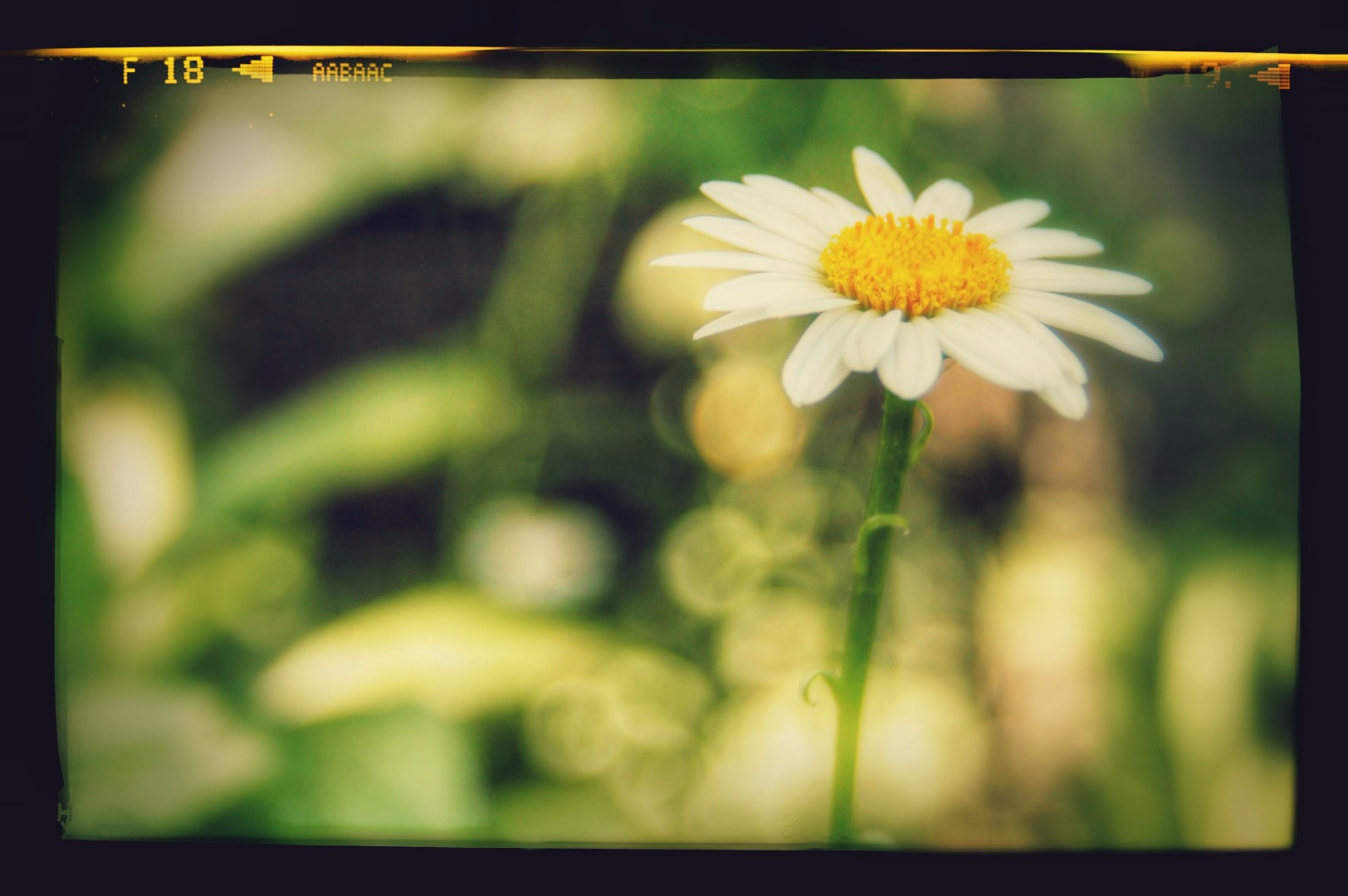
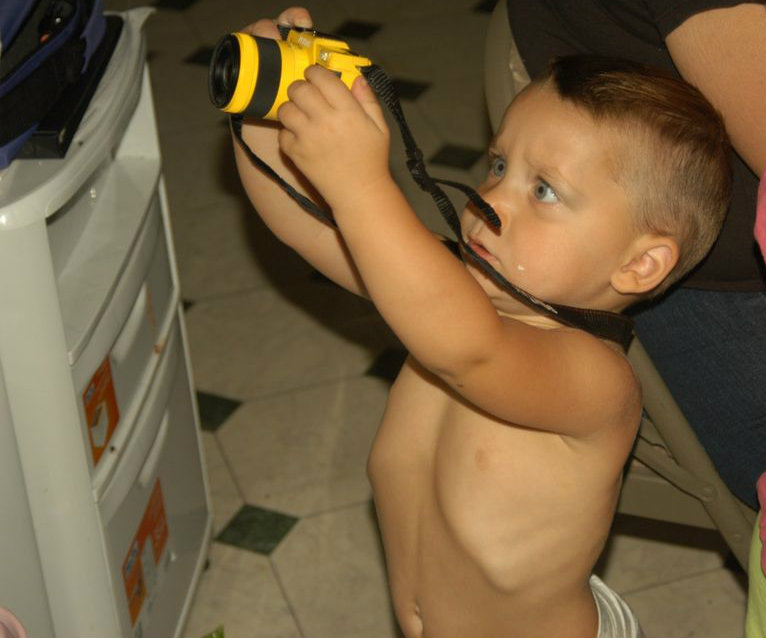
So you're interested in Photography? Awesome!
As it turns out, anyone can take a photograph - you just point and shoot.
Of course, of you're interested in doing it well it turns out there is a bit more to know than just pushing a button. There's great news, though! You are totally capable of great photography, regardless of what kind of camera you have right now - as long as you actually have a camera and you want to put in some time and effort.
If you take the time and effort you spent playing Candy Crush or Flappy Bird and take photographs instead, you'll be taking awesome pictures in no time! As a bonus, if you want you can even make money with photography if you want.
So what separates point-and-click photography from great photography? The same thing that separates mediocre art, comedy, movies, and books from the great. Great photographs have a story to tell. It doesn't have to be a long story, and it doesn't even have to be a story that everyone enjoys. If you're taking photographs for yourself, they just have to tell as story that you enjoy. Here are some stories that photography can tell:
- This food is delicious!
- This is the happiest day of my life!
- I'm sad.
- Something bad is about to happen.
Or the story a photograph can tell could be more nuanced, maybe it takes place over multiple photographs or even a book. Photographs allow you to tell a story and maybe you have a story that you want to tell. Or maybe you want to tell someone else's story. But just like with writing, you need the proper vocabulary in order to tell your story. This Instructable might not tell your story for you, but it will help give you the tools, the words that will help you be able to take great photographs.
If you understand four words, and have a camera, you will have the tools you need to take great photographs. The four words are:
- Aperture
- Shutter Speed
- ISO
- Focus
Aperture

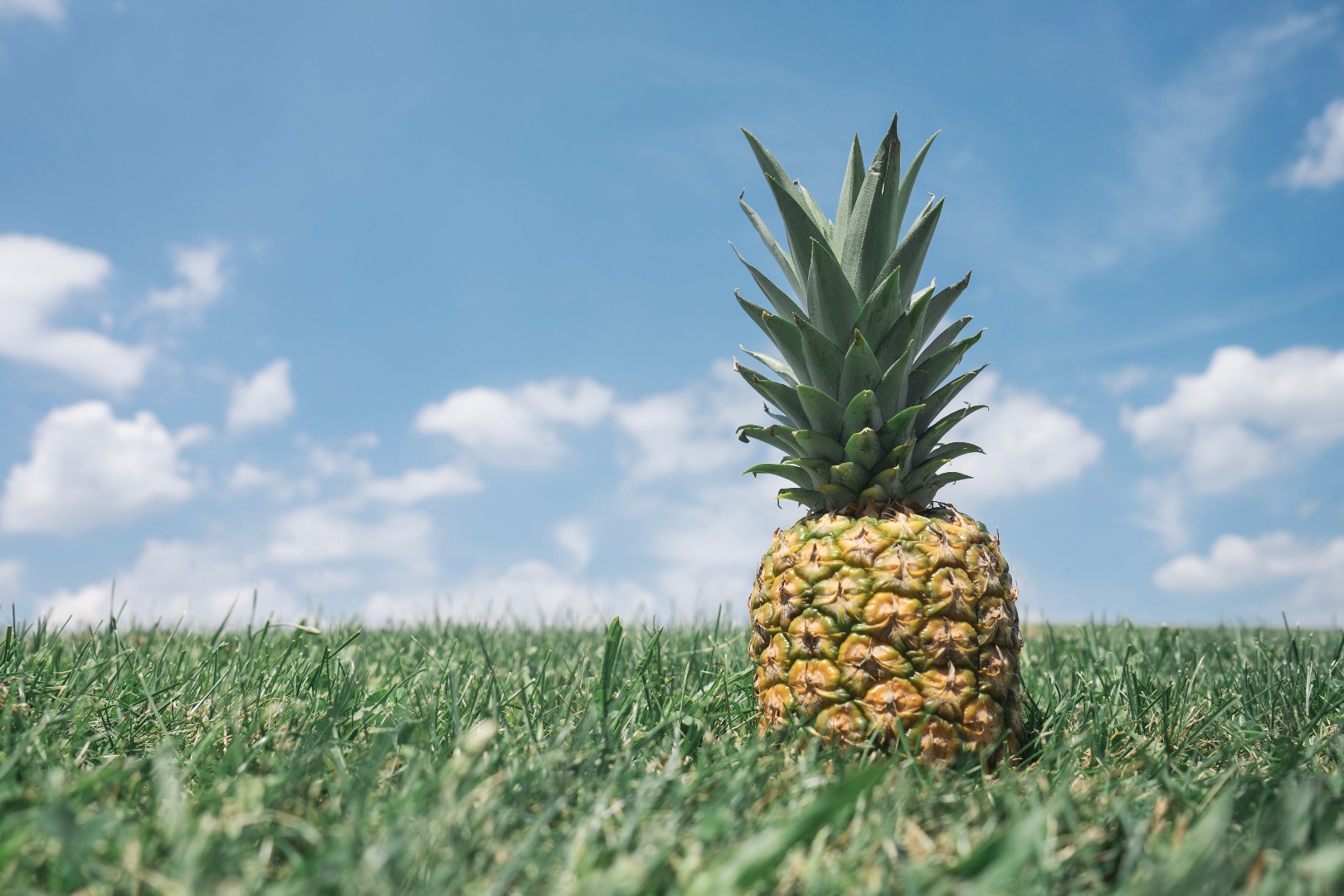
I think the most useful word to start with is Aperture.
Aperture means hole, or opening. In the case of our cameras, the aperture is the hole in the lens that lets light through to hit the sensor. If you have a film camera, simply replace the word "sensor" with "film" and everything still basically works the same.
Because of the way light and lenses work, the size of the aperture (or opening) is how you get that nice, soft background in pictures.
That soft background is called bokeh. If your camera has the ability to control the aperture it will usually be marked with Av, or sometimes A on the dial.
Before I explain why you get bokeh, it's worthwhile to understand how aperture is measured. Aperture is given as an f-number, or f-stop. This number is a ratio of the focal length (more on that later) and the size of the opening in your lens. The formula is given by N = f/D, where f is the focal length, and D is the diameter of the aperture. So if your lenses focal length was 300mm, and your aperture was 150mm, you would have 300mm/150mm or an f-number of 2. This is usually written as f/2. Because the number is a ratio, when you increase the size of the opening the number goes down. When you decrease the size of the opening, the number goes up. So if we shrank that opening to 100mm, we'd have f/3.
Why does the size of this aperture matter? Well your photograph is formed when a photon of light bounces off of what you're taking a picture of, travels through your lens, and hits the sensor in your camera. If you look at the picture of the pineapple, these rays of light are bouncing off of the pineapple and coming into the lens and creating that image of the pineapple on the sensor. But the light that forms the grass in front of and behind the pineapple and the sky and clouds enters around the edge of the lens, and these rays are not focused on the sensor, so they look all fuzzy and soft. To achieve this look, the photographer likely used a wide-open lens probably with somewhere between f/2 and f/4.
What if you want an image that has good sharp detail throughout? Then you need to close the aperture (by using a larger f-number). By closing the aperture it changes how the light is focused on your sensor which (usually) results in a sharper image. There's actually a point at which closing the aperture actually results in decreased sharpness, because some of the light entering your lens is not actually light from the subject of your image.
tl;dr: If you want a sharp image, reduce the size of your aperture (by increasing your f-number, but only to a point). If you want a soft image where everything but your subject is out of focus, open your aperture wide (by decreasing your f-number).
Shutter Speed

Shutter speed is my next favorite word. Or two words. To shoot in shutter priority mode, you'll use Tv (for Time?). Sometimes it's even abbreviated S. Especially if you have a DSLR or mirrorless camera, your camera has a physical shutter that opens, letting light hit the sensor. As you might guess, shutter speed measures how long the shutter is open. Most of the time your shutter speed is going to be fast - 1/250th of a second or even faster. Because it's usually measured in fractions of a second, it's typically abbreviated so 1/200th of a second becomes simply 200. Once you move up from the fractions of a second into longer times, you'll usually see the numbers increase to 1", 2", 15" or even 30" (the double quote marks mean seconds). Finally, some cameras offer a 'bulb' mode, that keep the shutter open as long as you have your finger on the shutter release button. With long exposures you can get some interesting effects.
Take a look at the picture in the train terminal and notice that some of the people in the picture are no more than blurs. That is because the shutter speed was probably a full second or longer. Typically you'll change the shutter speed when you want to alter how you show action. Want to freeze individual water droplets? Use a short shutter speed - 1/500 or faster. Want to stop a baseball mid-flight? Go even faster. Maybe 1/4000 of a second. Want to freeze your energetic toddler? Well, good luck with that, and let me know where I can find a shutter that fast ;)
Fast shutter speed can also help if you're a bit shaky with your camera. And vice versa, if you want to use long shutter speed you need somewhere stable (like a sturdy tripod) to place your camera.
tl;dr Shutter speed controls how long the sensor is exposed. Use long speeds in the dark or to make things blur, useful when you want to show motion. High speeds are good for freezing action or under bright light.
ISO
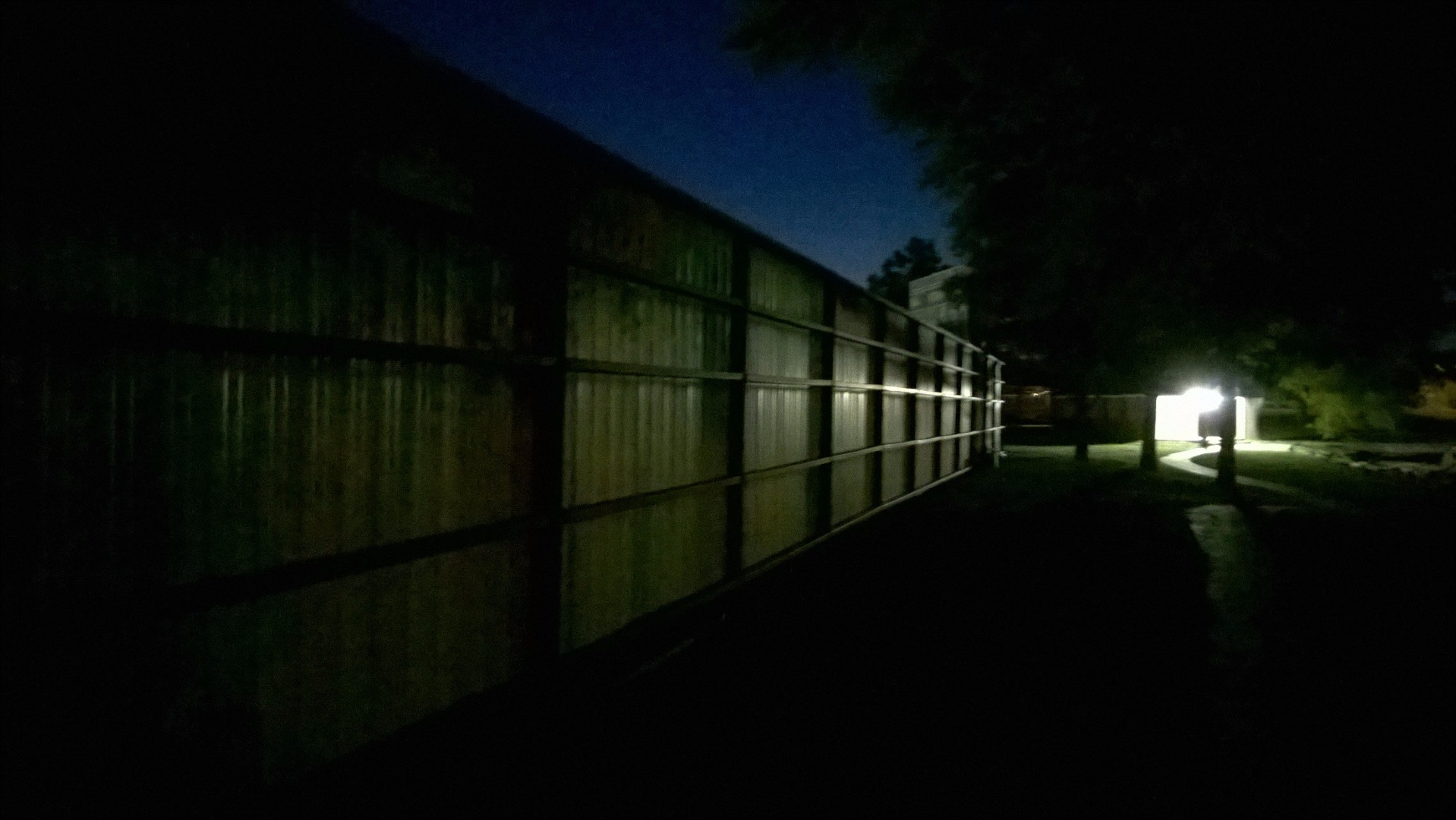
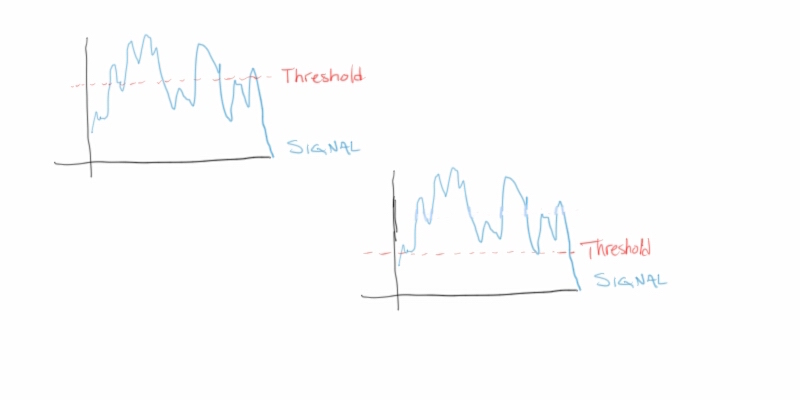
It seems to me like the closest cousin to shutter speed is ISO. In the context of photography, ISO just means "how sensitive your sensor/film is to light." There are actual standards (ISO is International Standards Organization), but camera makers are free to choose the standard they want to follow so it's pretty useless to worry about what one camera means compared to another. Just know that on one camera, a lower number (say, 100) is less sensitive to light than a higher number (like 800). While aperture and shutter speed handle what happens before the light reaches the sensor, the ISO determines what happens to the light when it actually hits the sensor.
To your sensor, light is a signal. ISO is basically the limit of what amount of light is required to make an image.
A typical low ISO is 200. What that means is that for all of the light that hits your sensor, only the light that is more intense than the threshold is accepted. Anything less is just ignored. But if you increase the ISO to 800, now a lot more light is used to form the image. Unfortunately, not all of that light is actually bouncing off of the object you want to photograph. If you look at the picture of a fence, I shot this at night with an ISO of 3200. Notice that the sky is not a uniform shade, it looks a bit like Jackson Pollock started to work on it. That's because of the higher ISO.
Another way to understand it is by this graph. At lower ISO, some of the signal is cut off or ignored. You won't notice that signal. But at a higher ISO, you're going to see more and more "bumps" in your picture. These bumps show up in your picture as noise, and typically photographers seek to eliminate noise. This means shooting at a low ISO. But what if you're in a dark environment? Is it better to not have a photograph and also no noise, or to have noise and get the photograph? So shoot at a higher ISO when you're in the dark. Also, it's much better to shoot at a high ISO than it is to try to lighten a photo in post production.
If you've ever played electric guitar, another way to understand ISO is that it's the equivalent of gain on your amp. Turn your gain up to 11, and you get distortion and that "crunchy" sound that we love so much out of our rock bands. I guess mom was right when she called our music, "noise" :)
tl;dr ISO is sensitivity. Higher ISO adds more noise, but lets you take pictures in darker places. Shoot in low ISO when you can, but don't be afraid to get a noisier picture if that's what it takes.
Focus, Daniel-san
Focus is the final word to know. There's not much to know about focus. Modern cameras do a pretty incredible job at automatic focusing, though they can still get it wrong. Personally, I always use spot focusing, and something called back-button focusing. On most DSLRs there will be a setting in your menu that changes the button on the back of your camera (AF-L/AE-L on Nikon, usually * on Canon) to focus instead of your shutter release. So instead of holding the shutter release halfway down to focus, I can use the button on the back of my camera. What's neat about this is that the focus stays locked wherever I was. So I can point my camera at my kids and focus there, then recompose the shot, and snap off 3-4 shots without worrying about focusing again. And if I'm taking a picture of something that's stationary, even better! Maybe it's a leaf, a door, or a screw. As long as I don't move, I just have to focus once. You always want your subject to be in focus, and when your subject is a person or an animal you want to make sure their eyes are in focus. So for me I simply point my camera at their eye, use the back button focus, recompose and then take several shots.
But just what does it mean that picture is in focus?
Your picture is in focus when your subject has clean, sharp edges. And how does your camera get those sharp edges? It all has to do with how a lens works. Light enters a lens at one point, and then comes out the lens on the other side - but on the opposite side. If it enters the lens at the top, it exits at the bottom. Comes in on the left, exits on the right. Yes, that's right, the image that hits the sensor is actually upside-down and backwards from the way we see things*
I think the most interesting aspect about focus is what's called the focal length of your lens. And, as the name suggests, it's the length away from your camera sensor that brings your image into focus. So a 10mm lens is going to be 10mm away from the sensor to be in focus. A 300mm lens will be 300mm away. And if you remember what we learned about f-numbers, a 300mm lens that is open at f/2 will have an aperture that's 150mm. A 10mm lens at the same aperture will only have an aperture that's 5mm. Typically shorter lenses can have wider apertures. Apparently Zeiss made a 50mm f/0.7 lens, which means it had an aperture of 71mm. Stanley Kubrik used it to shoot an scene in candlelight, and NASA took some pictures of the dark side of the moon.
tl;dr Focus on the eyes of people and animals. Use back-button and spot focus for maximum control.
* Actually, the image that forms on your retina is *also* upside down and backwards because your eye works pretty much like a camera.
Putting It All Together
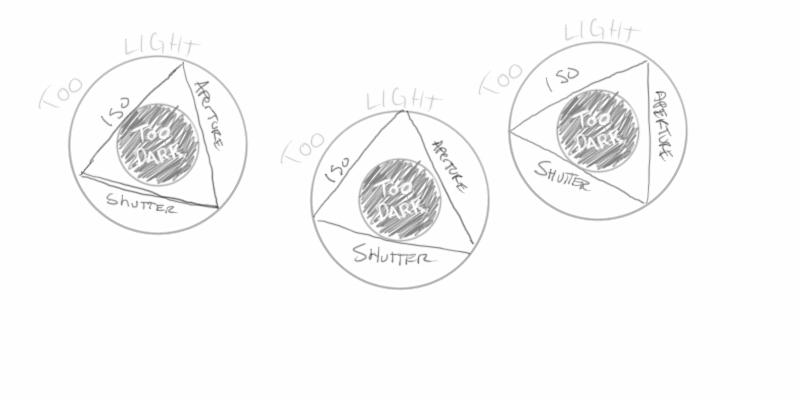
Aperture, shutter speed, and ISO are three sides of a triangle that make up your exposure. As long as you're in focus, technically you should have a good picture. However, if you understand the effect of adjusting the sides of your triangle then you are in control of the picture. As you push the sides of the triangle out, you increase the light that makes up your photograph - either by letting more beams in, for longer, or giving them more impact. When you pull one of the sides in, you decrease the light. As a photographer, capturing the story of that moment, you want to have the correct exposure that says what you want it to say.
In the dark you need to increase one (or more) settings. Open your aperture wider, slow down your shutter, and/or increase your ISO. In the light you need to decrease one (or more) settings. Close your aperture (with a larger f-number), speed up your shutter, and/or decrease your ISO.
Most cameras nowadays offer you the ability to pick one setting and let your camera handle the others. Decide what effect you want, and let the camera handle the rest. Do you want nice bokeh? Use aperture mode (Av) and open the shutter wide (with a small f-number). You want silky smooth water, or to freeze that sports action? Use shutter priority (Tv). Simply set your ISO for the lighting situation, and your camera make the other choices for you. But if you really want to put your knowledge to work, shoot in manual mode (M) and you make the decisions.
You can do exactly what the camera does, but you have full control. If your camera offers manual mode, it should also have a light meter that will tell you when your scene is properly exposed. If you want to have a lot of bokeh, or you want your entire scene sharp, pick your aperture. Now look at your light meter and adjust your shutter speed until the light meter reads a proper exposure. Take a picture, and then check it out. Is it too bright with the highlights blown out? Bump down your shutter speed and take the picture again. Is it too dark, with details lost in the shadows? Bump up your shutter speed, and take the picture again. If you want to freeze the action - or get some cool motion blur - set your shutter speed. Then adjust your aperture to get the proper exposure.
Manual mode definitely takes some getting used to, but I find that shooting in manual mode gives me more consistent results than any of the program modes.
But... What If I Just Have a Cell Phone Camera?
You just have a cell phone camera? Turns you you can still take amazing photos, even with an old iPhone 3gs As long as your camera has some controls there are still some things you can do. And even if it doesn't, at least you can compose your shot. But usually you can at least choose where you want to focus, and typically you can get some decent bokeh if you get nice and close to your subject.
Usually cell phone cameras also have the ability to do something called exposure compensation. If your scene is too light or too dark, you can shift the exposure comp around. (High end cameras will also have exposure comp that performs the same function. Exposure compensation will simply affect your affect your light meter when shooting in Manual mode, or make your camera adjust the aperture/shutter speed in the other modes). They'll also typically offer a timer, which is handy in low light situations. Set your timer for 2 or 10 seconds and prop your phone (or camera) up on something solid. This will eliminate the blur from trying to hold your camera steady for a long time. If you can't prop your phone anywhere leaning up against something solid may also help.
There *are* things that a higher end camera is better for, but you can do a shocking amount of good photography with cell phone cameras. And they're getting better and better every day.
Now It's Your Turn
This is just the beginning. Photography is awesome, and so much fun and there's tons of things to learn. But now you have the tools to start telling your story. You know about aperture and how to get bokeh. You know about shutter speed, and how to freeze or show action. You know about ISO and getting those shots even when it starts to get dark.
So get out there and take some pictures! Tell a story of a moment in time.
If you learned something new, go out and put it into practice.
Crank up your ISO and take some cool night shots, or open that aperture and take a portrait with some nice bokeh, or keep that shutter open and take light trails, or make that water look silky smooth.
Or take something else! It's your story, you tell it the way you want to tell it. But I'd love to see what you do.
Take some pictures using something that you learned today and post it in the comments, and be sure to vote for me in the photography contest! Thanks!